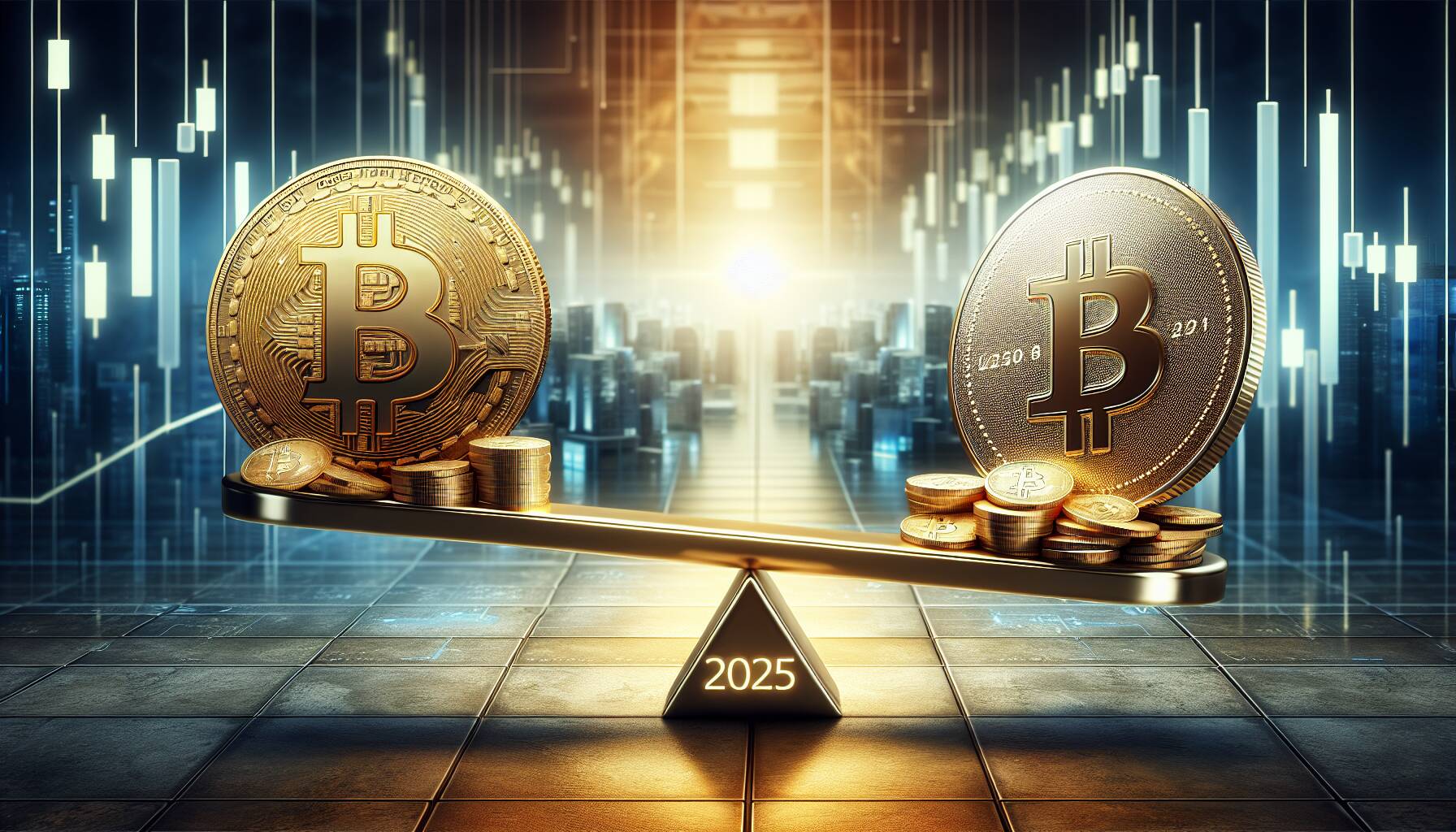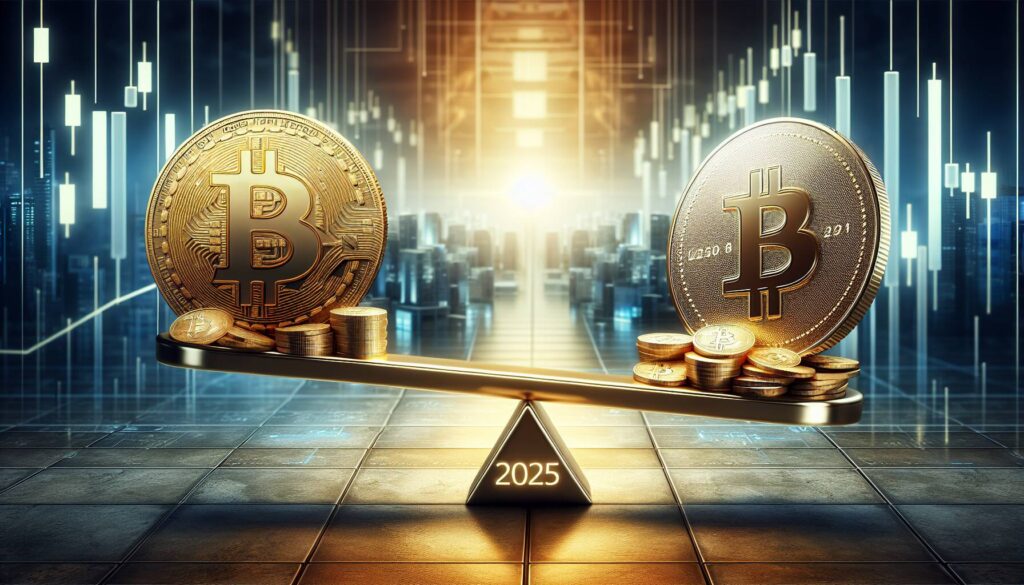JPMorgan Chase, a leading global financial institution, has recently made headlines with its forecast regarding Bitcoin’s potential for growth compared to traditional assets like gold. According to their latest analysis, JPMorgan suggests that Bitcoin could experience significant upside in the second half of 2025, positioning it as a more advantageous investment relative to gold.
This insight comes as cryptocurrency continues to garner attention from both institutional and retail investors alike. Bitcoin, often dubbed digital gold, has been a topic of fierce debate in the financial community regarding its effectiveness as a store of value and a hedge against inflation.
“We’ve observed that Bitcoin’s appeal is strengthening, and its correlation with traditional assets like gold is starting to diverge,”
noted analysts at JPMorgan. This statement reflects the growing sentiment that cryptocurrencies, particularly Bitcoin, may offer unique opportunities amidst an evolving economic landscape. As more corporate entities and individual investors explore the possibilities within the digital currency space, JPMorgan’s bullish stance on Bitcoin could influence the broader market’s perception and the role of cryptocurrencies in investment portfolios.
With Bitcoin’s market dynamics constantly shifting, the juxtaposition with gold presents a fascinating narrative that signals a changing tide in how investors view asset stability and growth potential. Analysts are keenly observing these developments, particularly as we approach the latter half of 2025, where JPMorgan believes Bitcoin could shine brighter than its metallic counterpart.

JPMorgan Predicts Bitcoin’s Growth Over Gold
JPMorgan has recently released insights indicating that Bitcoin may have more growth potential compared to gold in the latter half of 2025. Here are the key points from their analysis:
- Market Positioning: Bitcoin is seen as a favorable long-term investment opportunity.
- Institutional Adoption: Increased participation from institutional investors is likely to drive demand.
- Comparison with Gold: Bitcoin is expected to outperform gold due to its digital nature and growing acceptance as a store of value.
- Price Predictions: Analysts anticipate substantial price appreciation for Bitcoin as market dynamics evolve.
- Risk Factors: Potential regulatory changes and market volatility could impact Bitcoin’s performance.
The insights from JPMorgan highlight a significant shift in market perceptions regarding traditional assets like gold and digital assets like Bitcoin, which could influence investment strategies.
Understanding these predictions could impact readers by encouraging them to consider Bitcoin as part of their investment portfolio, especially as the financial landscape changes in favor of digital currencies.
JPMorgan’s Bold Bitcoin Predictions: A New Era for Digital Assets
JPMorgan’s recent analysis suggests that Bitcoin may outperform gold in the latter half of 2025, signaling a significant shift in how we perceive digital currencies compared to traditional assets. This forecast positions Bitcoin not just as a speculative investment, but as a legitimate asset class with considerable growth potential, especially as macroeconomic conditions fluctuate.
When juxtaposed with similar insights from other financial institutions, it becomes clear that JPMorgan’s stance offers a competitive advantage in the crypto and investment landscape. For instance, firms like Goldman Sachs have suggested that cryptocurrencies could face regulatory challenges and volatility concerns, which might hinder their performance. However, JPMorgan’s optimism could attract investors who are currently on the fence, as their endorsement lends a level of credibility to Bitcoin that other institutions might lack.
Moreover, the ongoing debate between Bitcoin and gold is becoming increasingly relevant. While gold has long been viewed as a safe haven during economic downturns, Bitcoin is emerging as a digital store of value with its finite supply and increasing mainstream acceptance. This potential advantage for Bitcoin could appeal to younger investors seeking modern alternatives that align with their tech-savvy lifestyles.
On the flip side, JPMorgan’s bullish outlook could create challenges for traditional gold investors who might find their portfolios under pressure as interest shifts toward Bitcoin. In particular, those linked to financial markets that rely heavily on gold might see fluctuations in asset demand as confidence in cryptocurrencies strengthens. Furthermore, any negative news regarding Bitcoin regulation or security breaches could undermine confidence rapidly, creating a rollercoaster for investors.
The implications of this analysis extend beyond just institutional investors. Retail investors, particularly millennials and Gen Z, may find JPMorgan’s projection empowering, pushing them to allocate more resources to crypto assets in search of higher returns. Conversely, more traditional investors may be risk-averse, potentially missing out on growth opportunities if they remain anchored to conventional views.

















